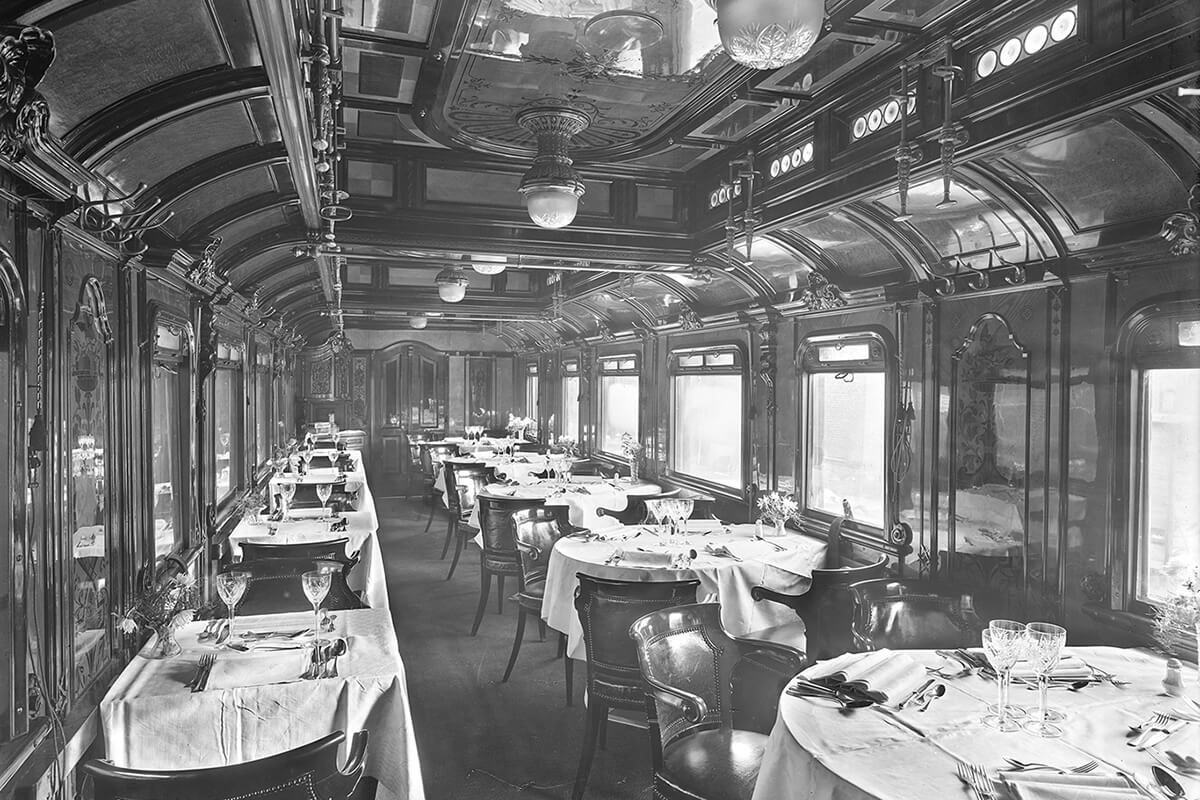Positions on Transport, Technology, Innovation
Rail travel: safe, swift and ... sensual
I hope you enjoy reading this issue,
Managing Director Laurenz Trunner
and the EBE Solutions team
A conventional PRC; now EBE technology saves additional wheel sensors and cable routing
EBE-TECHTALKS 3: non-public railway crossings
 When the yellow light flashes, the railway crossing can be passed.
When the yellow light flashes, the railway crossing can be passed.
A dining car of the Compagnie Internationale des Wagons-Lits (CIWL), woodcut, 1884. Dining cars had been operated by the CIWL for the first time in 1880 between Berlin and Bebra, and from June 1884 the Orient Express operated daily (with dining cars) between Paris and Vienna.
history of the dining car
Compagnie Internationale des Wagons-Lits (CIWL)
In 1867, the Belgian Georges Nagelmackers had learned to appreciate the new Pullman sleeping cars in the USA and decided to introduce this innovation in Europe. Some 20 years later, after turbulent founding years, his Compagnie Internationale des Wagons-Lits was a de facto monopolist; Pullman had never really been able to gain a foothold in continental Europe. Nagelmacker turned to a new field of business: the dining car.
Initial experience had already been gained with improvised dining cars on the route between Berlin and Bebra; now CIWL developed its own dining cars, which it marketed together with the sleeping cars. Demand was high, but Nagelmacker soon had a new idea: he began to introduce his own trains, consisting only of CIWL coaches, to cover the luxury segment. The route network grew steadily and connected the metropolises in Western Europe with the Balkans and the East. CIWL’s partners in this were, among others, the k.k. State Railways (kkStB) as well as the private Austro-Hungarian State Railway Company and soon Vienna became a hub between West and East: the legendary Orient Express ran daily between Paris and Vienna from 1884, and in 1888 it was extended to Constantinople. CIWL had long since become a monopoly in the imperial and royal monarchy. In 1903 a factory (which still exists today) was built in Inzersdorf. However, in the course of the First World War, CIWL came up against a serious competitor, the
Mitteleuropäische Schlafwagen-
und Speisewagen-Aktien-Gesellschaft
Founded by the Central Powers in 1916, MITROPA was to end the supremacy of the CIWL. To this end, it was granted a monopoly for sleeping and dining cars in Germany, Austria and Hungary and gradually took over other routes. After World War I, its radius was limited to Germany and MITROPA began to expand its business areas: it took over the catering of Lufthansa and on ships of the DDSG. Conversions of the imperial court train resulted in four saloon dining cars in 1922, and in 1927 the characteristic logo and the Bordeaux-red livery were introduced. With the start of the Second World War, operations were severely curtailed, with the last dining car running in June 1942. After the Second World War, MITROPA was also divided with the division of Germany. In the GDR, it operated not only sleeping and dining cars, but also station restaurants and a large number of gastronomic establishments, and had a major influence on the (gastronomic) memories of the post-war generations.

MITROPA Dining car (interior view dining room), 1924, © Verkehrsmuseum Dresden

A four-axle MITROPA dining car, built in 1890. © Verkehrsmuseum Dresden

Seat reservation for the MITROPA dining car, GDR, after 1945, © Dokumentationszentrum Alltagskultur der DDR
Today, MITROPA dining cars exude “Ostalgie” in some German museums.

